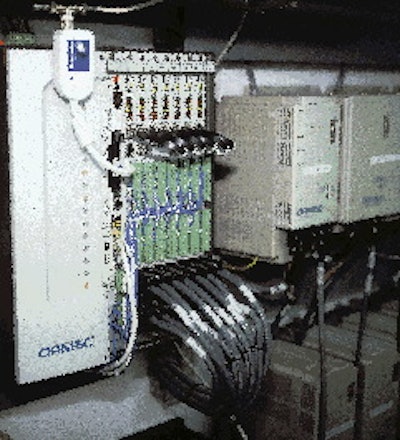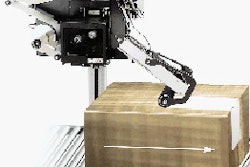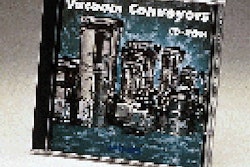A motion controller is similar to a PLC in that certain inputs trigger outputs that cause a desired movement or motion on a machine. With a motion controller, the inputs are typically electronic signals or pulses generated by encoders within servo motors. (An encoder is attached to the shaft of a motor that transmits signals that represent the shaft position back to the motion controller.) Precision timing is the key reason that Goetze's moved to digital motion control. The motors that power the feeding/collating system's conveyors and collating belts, timed one against another in a delicate balance, all follow the lead of the main drive on the wrapper, thanks to an encoder placed on the shaft of that motor. Indeed, the difference between digital and analog controls is one of precision. With an analog system, a motion controller sends a low-level voltage signal to the drive. As the voltage of the signal increases or decreases, so does the speed of the motor. The drawback: The controller must rely on analog conversion circuitry in the drive--which itself must be "tuned" or adjusted by the drive manufacturer--to accurately translate the signal into the desired speed. That means, for example, that a motion controller sending a 2.873-volt signal might be translated by the drive as 198 rpm, or maybe 201 rpm, depending on how that particular drive has been adjusted. With a digital motion control system, the motion controller literally instructs the drive--via instructions, speeds and other parameters represented as a code of 1's and 0's--to spin the motor at exactly 200 rpm. Different than a PLC The difference between the Ormec motion controller and a PLC is that the motion controller is able to scan the exact position of all 12 motors every 125 microseconds. PLCs can also control motion using servo cards, which typically result in position update scan times of two milliseconds, according to Dean Mannlein, president of Automated Motion, Inc. That means the Orion motion controller is at minimum 16 times faster than a servo card in a PLC. Faster speed translates into more precise control at higher rpms. The Ormec controller achieves the speed through brute force computational power. Plugged into the controller are seven dedicated digital signal processing (DSP) cards, each using a dedicated microprocessor. Each of the seven cards controls two drives. "Based on the speeds that Goetze's required, this was the only controller that we found that could handle it," says Mannlein. Aside from precision timing, digital motion control has another important benefit over mechanical parts such as cams: It's far easier to "adjust" the motion. With a physical cam, adjusting the timing of the machine means adjusting or re-machining the cam until the desired movement is achieved. That's both time-consuming and "outrageously expensive," says Tom Hart, chief electrician at Goetze's. With servo motors, drives and a motion controller, adjustments can be made by changing the instructions the controller sends to the drive. Such changes can even be done from the operator interface screen. "If a mechanic or operator believes that the candy should arrive at a certain point a fraction of a second sooner, he or she can experiment and find out what works best without getting out the drill or a file or calling a welder," says Hart. A final benefit of this controller is the port for an optional Ethernet card that allows it to be connected to Goetze's factory network. This gives the firm's supervisory control and data acquisition system (SCADA) access to the motion controller's production data. The performance isn't without its price, Hart acknowledges. Servo motors, drives and motion controllers are more expensive than simpler analog motors and drives. Automated Motion's Mannlein says the motion controller plus its attendant add-on cards required to control the motors lists for a bit over $16ꯠ. By contrast, a high-performance PLC with an add-on servo card might cost only $5ꯠ to $10ꯠ, according to Mannlein. "You have to bite off the expense up front," Hart admits, to enjoy the benefits


























